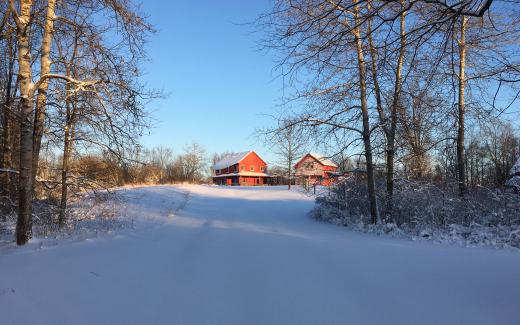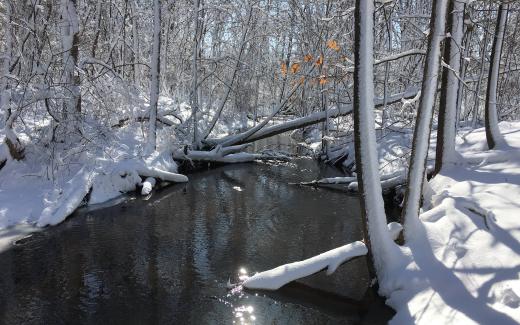jung haus
michigan’s first certified passive house
Here we share some observations about and snapshots of the Passive House we had built in Oakland County, Michigan. All photographs were taken by us unless otherwise noted.
—Maura and Kurt Jung
Ten years
Saturday, 25 March 2023
The recent vernal equinox marked the tenth anniversary of our move into our Passivhaus. The house has provided us with unmatched comfort and peace this last decade. We continue to be surprised when opening the door to blustery weather how insulated from wind and temperature extremes we are. As we write this, cold, horizontal sleet is beating against the house outside and we are hardly aware of it. Our roomy windows have yielded us much natural light in all seasons.
A must-have resource for any builder of a new home in North America’s cold climate is Martin Holladay’s eminently practical book Musings of an Energy Nerd. This book had not been published when we built our house. Had it been, it would have provided confirmation for most of our priorities and challenges to some others. Read this book if you have an interest in designing and building in a way that is right for both you and the planet. He wraps up the book with an afterword titled Martin’s Pretty Good House Manifesto. What a better world it would be if all new homes were created in conformance with its ten principles.
Do we have any regrets? Not many. One has to do with the placement of our two mini split interior units, the wall-mounted heat pump cassettes that warm our house in winter and dehumidify it in summer. When our house was built we decided, against the wishes of the builder, to put them over doorways that were out of view from the main living areas. These cramped spaces made installation and subsequent service difficult.
Another regret pertains to the way the fiber-cement veneer that covers our house and garage was installed. Vertical furring strips provide important vented airspace between the veneer and the exterior wall. The cement boards are fastened along their upper edge with nails to these furring strips. In retrospect, we should have drilled holes to allow the nails to anchor into the strips without stressing the cement boards. As it is, there are places where the nails cracked the fiber cement. These not only eliminate the support in those particular instances but increase the stresses on the remaining nailed areas. In one case, we found an entire eight foot board that was hanging by one nail.
Finally, the geothermal preconditioner that we fitted to our energy recovery ventilator a couple years ago has proved disappointing, at least in summer. Condensation from hot, muggy inbound air collects and fails to drain properly. We simply turn this preconditioner off in summer and turn in back on in winter.
Regrets aside, the aspects of this home that continue to delight far outweigh the negatives. The year-round, uniform temperature and humidity and uninterrupted fresh air continue to spark joy for us.


Posts
April 2012
May 2012
Framing delivered and barrier installed
Installing the first floor walls
Preparing for the second floor
Straight, Plumb, Level, Square and now Airtight
June 2012
Crawl space insulation and roof
First floor preparation, TJI base
First floor concrete and first envelope trusses
Excavating, trusses and crawlspace stairway
Fiberboard installation and wrap
July 2012
August 2012
September 2012
Wiring, insulation, porch roof
Mechanical system installation
October 2012
Wood floors and exterior painting
November 2012
Exterior concrete, kitchen cabinets
WKAR interview, floor finishing
Exterior concrete, crawlspace walls and floor
Compressors, exterior lights, tile
December 2012
Exemplary results in blower door test
January 2013
Upstairs floor finishing, water conditioner
February 2013
First Holly Passive House Conference
March 2013
December 2013
January 2014
February 2014
April 2014
May 2014
August 2015
February 2017
December 2017
May 2019
July 2020
March 2023
Links of interest
Energy Wise Homes
Bostwick Excavating
Hanneman and Fineis Concrete Construction
RTM Heating & Cooling
Bach Electric
GoldStar Hardwood
Randy Lalone Well Drilling
Nu•Wool Premium Cellulose Insulation
Pro Trees Unlimited
Spartan Painting
Reynolds Water Conditioning, Co.
Mitsubishi Electric Cooling & Heating
Green Building Advisor article

